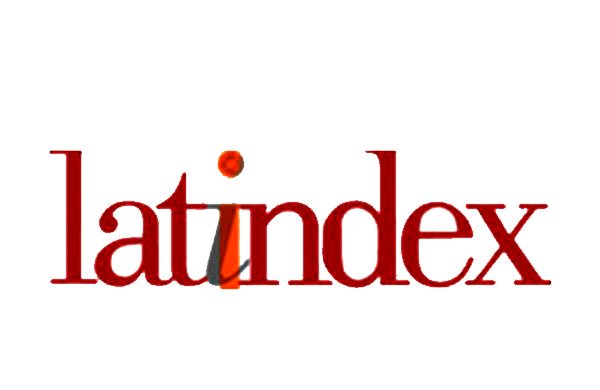Liposomal iron supplementation in women of reproductive age: analysis of biochemical parameters and symptoms
Suplementação de ferro lipossomal em mulheres na idade reprodutiva: análise de parâmetros bioquímicos e sintomas
DOI:
https://doi.org/10.17765/2176-9206.2025v18e13385Keywords:
Nutritional supplements, Iron, Iron Deficiency, WomenAbstract
This study investigates the effects of liposomal iron supplementation in women of reproductive age, focusing on biochemical parameters and clinical symptoms. This interventional study, conducted in Belo Horizonte, Brazil, included 20 women of reproductive age with regular menstrual cycles who received a daily supplementation of 30 mg of liposomal iron for 60 days. Clinical symptoms, dietary intake, and laboratory tests (transferrin saturation, ferritin, hemoglobin, and C-reactive protein) were evaluated at baseline and at the end of the study. Liposomal iron supplementation increased hemoglobin (p=0.002) and ferritin (p=0.031) but had no effect on transferrin saturation (p=0.541). Symptoms such as fatigue, weakness, hair loss, nausea, and constipation improved. Thus, the present study demonstrates that liposomal iron supplementation improved iron metabolism markers and clinical symptoms in women of reproductive age.
Downloads
References
1 – World Health Organization. Global nutrition targets 2025: anaemia policy brief (WHO/NMH/NHD/14.4). Genebra, 2014. Disponível em: https://www.who.int/publications/i/item/WHO-NMH-NHD-14.4
2 – Kumar A, Sharma E, Marley A, Samaan MA, Brookes MJ. Iron deficiency anaemia: pathophysiology, assessment, practical management. BMJ Open Gastroenterol. 2022;9(1):e000759. https://doi.org/10.1136/bmjgast-2021-000759
3 – Souza ES, Batista JET, Lyrio AO, Guedes EM, Figueiredo ACMG, Cruz SS. Prevalência de anemia em gestantes das Américas: uma revisão rápida com metanálise. Saud Pesq. 2023;16(2):e-11176. https://doi.org/10.17765/2176-9206.2023v16n2.e11484
4 – Knowles J, Walters T, Yarparvar A, Brown R. A review of anemia prevalence, and prevention and control strategies, in the Eastern Europe and Central Asia Region. Curr Dev Nutr. 2024;8(12):104477. https://doi.org/10.1016/j.cdnut.2024.104477
5 – Pasricha SR, Tye-Din J, Muckenthaler MU, Swinkels DW. Iron deficiency. Lancet. 2021;397(10270):233-248. https://doi.org/10.1016/S0140-6736(20)32594-0
6 – Zimmermann MB, Hurrell RF. Nutritional iron deficiency. Lancet. 2007;370(9586):511-520. https://doi.org/10.1016/S0140-6736(07)61235-5
7 – Machado IE, Malta DC, Bacal NS, Rosenfeld LGM. Prevalence of anemia in Brazilian adults and elderly. Rev Bras Epidemiol. 2019;22(suppl.2):e190008.supl.2. https://doi.org/10.1590/1980-549720190008.supl.2
8 – Andre HP, Sperandio N, Siqueira RL, Franceschini SCC, Priore SE. Food and nutrition insecurity indicators associated with iron deficiency anemia in Brazilian children: a systematic review. Ciênc Saúde Colet. 2018;23(4):1159-1167. https://doi.org/10.1590/1413-81232018234.16012016
9 – Chouraqui JP. Dietary approaches to iron deficiency prevention in childhood – A critical public health issue. Nutrients. 2022;14(8):1604. https://doi.org/10.3390/nu14081604
10 – Man Y, Xu T, Adhikari B, Zhou, C, Wang Y, Wang B. Iron supplementation and iron-fortified foods: a review. Crit Rev Food Sci Nutr. 2022;62(16):4504-4525. https://doi.org/10.1080/10408398.2021.1876623
11 – Name JJ, Vasconcelos AR, Maluf MCVR. Iron bisglycinate chelate and polymaltose iron for the treatment of iron deficiency anemia: a pilot randomized trial. Curr Pediatr Rev. 2018;14(4):261-268. https://doi.org/10.2174/1573396314666181002170040
12 – Antunes CVA, Nascimento CRA, Ribeiro TCR, Antunes PA, Chebli LA, Fava LMG et al. Treatment of iron deficiency anemia with lipossomal iron in inflammatory bowel disease: efficacy and impact on quality of life. Int J Clin Pharm. 2020;42(3):895-902. https://doi.org/10.1007/s11096-020-01044-x
13 – Maladkar M , Sankar S, Yadav A. A novel approach for iron deficiency anaemia with liposomal iron: concept to clinic. J Biosc Med. 2020;8(9):27-41. https://doi.org/10.4236/jbm.2020.89003
14 – Tan C, Karaca AC, Assadpour E, Jafari SM. Influence of different nano/micro-carriers on the bioavailability of iron: Focus on in vitro-in vivo studies. Adv Colloid Interface Sci. 2023;318:102949. https://doi.org/10.1016/j.cis.2023.102949
15 – Parisi F, Berti C, Mando C, Martinelli A, Mazzali C, Cetin I. Effects of different regimens of iron prophylaxis on maternal iron status and pregnancy outcome: a randomized control trial. J Matern Fetal Neonatal Med. 2017;30(15):1787-1792. https://doi.org/10.1080/14767058.2016.1224841
16 – Vitale SG, Fiore M, Rosa VLL, Rapisarda AMC, Mazza G, Paratore M et al. Liposomal ferric pyrophosphate and ascorbic acid supplementation in pregnant women with iron deficiency anaemia: haematochemical, obstetric, neonatal and psychological outcomes in a prospective observational study. Int J Food Sci Nutr. 2022;73(2):221-229. https://doi.org/10.1080/09637486.2021.1950129
17 – Bastida G, Guise CH, Algaba A, Nieto YB, Soares JM, Robles V et al. Sucrosominal iron supplementation for the treatment of iron deficiency anemia in inflammatory bowel disease patients refractory to oral iron treatment. Nutrients. 2021;13(6):1770. https://doi.org/10.3390/nu13061770
18 – Low MSY, Speedy J, Styles CE, De-Regil LM, Pasricha SR. Daily iron supplementation for improving anaemia, iron status and health in menstruating women. Cochrane Database Syst Rev. 2016;4(4):CD009747. https://doi.org/10.1002/14651858.CD009747.pub2
19 – Cançado RD, Leite LAC, Muñoz M. Defining global thresholds for sérum ferritin: a challenging mission in establishing the iron deficiency diagnosis in this era of striving for healthy equity. Diagnostics (Basel). 2025;15(3):289. https://doi.org/10.3390/diagnostics15030289
20 – Mahroum N, Alghory A, Kiyak Z, Alwani A, Seida R, Alrais M et al. Ferritin – from iron, through inflammation and autoimmunity, to COVID-19. J Autoimmun. 2022;126:102778. https://doi.org/10.1016/j.jaut.2021.102778
21 – Stoffel NU, von Siebenthal HK, Moretti D, Zimmermann MB. Oral iron supplementation in iron-deficient women: how much and how often? Mol Aspects Med. 2020;75:100865. https://doi.org/10.1016/j.mam.2020.100865
22 – Mujica-Coopman MF, Borja A, Pizarro F, Olivares M. Effect of daily supplementation with iron and zinc on iron status of childbearing age women. Biol Trace Elem Res. 2015;165(1):10-17. https://doi.org/10.1007/s12011-014-0226-y
23 – Abbati G, Incerti F, Boarini C, Pileri F, Bocchi D, Ventura P et al. Safety and efficacy of sucrosomial iron in inflammatory bowel disease patients with iron deficiency anemia. Intern Emerg Med. 2019;14(3):423-431. https://doi.org/10.1007/s11739-018-1993-9
24 – World Health Organization. Physical status: the use and interpretation of anthropometry. Genebra, 1995. 452p. (Technical Report Series No. 854). Disponível em: https://apps.who.int/iris/handle/10665/37003
25 – Fisberg RM, Marchioni DML, Colucci ACA. Avaliação do consumo alimentar e da ingestão de nutrientes na prática clínica. Arq Bras Endocrinol Metab. 2009;53(5):617-624. https://doi.org/10.1590/S0004-27302009000500014
26 – Bailey RL. Overview of dietary assessment methods for measuring intakes of foods, beverages, and dietary supplements in research studies. Curr Opin Biotechnol. 2021;70:91-96. https://doi.org/10.1016/j.copbio.2021.02.007
27 – Biniwale P, Pal B, Sundari T, Mandrupkar G, Datar N, Khurana AS et al. Liposomal iron for iron deficiency anemia in women of reproductive age: review of current evidence. Open J Obstet Gynecol. 2018;8(1):993-1005. https://doi.org/10.4236/ojog.2018.811100
28 – Baomiao D, Xiangzhou Y, Li L, Hualin Y. Evaluation of iron transport from ferrous glycinate liposomes using Caco-2 cell model. Afri Health Sci. 2017;17(3):933-941. https://dx.doi.org/10.4314/ahs.v17i3.37
29 – Tinsley GM, Harty PS, Stratton MT, Siedler MR, Rodriguez C. Liposomal mineral absorption: a randomized crossover trial. Nutrients. 2022;14(16):3321. https://doi.org/10.3390/nu14163321
30 – Trivedi S, Shah S, Patel R. Review on novel oral iron formulations with enhanced bioavailability for the treatment of iron deficiency. J Drug Deliv Sci Tech. 2023;90:105181. https://doi.org/10.1016/j.jddst.2023.105181
31 – Kaur T, Upadhyay J, Nandave M, Alsayari A, Alshehri SA, Pukale S et al. Exploring progress in iron supplement formulation approaches for treating iron deficiency anemia through bibliometric and thematic analysis. Heliyon. 2024;10(7):e29058. https://doi.org/10.1016/j.heliyon.2024.e29058
32 – Conselho Federal de Nutrição. Resolução CFN no 656 de 15 de junho de 2020. Disponível em: https://www.cfn.org.br/wp-content/uploads/resolucoes/resolucoes_old/Res_656_2020.html
33 – Okam MM, Koch TA, Tran MH. Iron supplementation, response in iron-deficiency anemia: analysis of five trials. Am J Med. 2017;130(8):991.e1-991.e8. https://doi.org/10.1016/j.amjmed.2017.03.045
34 – Blanco-Rojo R, Perez-Granados AM, Toxqui L, Gonzalez-Vizcayno C, Delgado MA, Vaquero MP. Efficacy of a microencapsulated iron pyrophosphate-fortified fruit juice: a randomized, double-blind, placebo-controlled study in Spanish iron-deficient women. Br J Nutr. 2011;105(11):1652-1659. https://doi.org/10.1017/S0007114510005490
35 – Plesea-Condratovici A, Plesea-Condratovici C, Rosoga N, Nedelcu N. Efficacy and tolerability of a novel food supplement (Turbofer?) containing microencapsulated iron in liposomal form, in female iron deficiency anaemia. Progr Nutr. 2015;17(3):214-219. Disponível em: https://www.mattioli1885journals.com/index.php/progressinnutrition/article/view/4869
36 – Hussain U, Zia K, Iqbal R, Saeed M, Ashraf N. Efficacy of a novel food supplement (Ferfer?) containing microencapsulated iron in liposomal form in female iron deficiency anemia. Cureus. 2019;11(5):e4603. https://doi.org/10.7759/cureus.4603
37 – Rocha EMB, Lopes AF, Pereira SM, Leone C, Abreu LC, Vieira PD et al. Iron deficiency anemia and its relationship with socioeconomic vulnerability. Rev Paul Pediatr. 2020;38:e2019031. https://doi.org/10.1590/1984-0462/2020/38/2019031
Downloads
Published
How to Cite
Issue
Section
License
Copyright (c) 2025 Saúde e Pesquisa

This work is licensed under a Creative Commons Attribution 4.0 International License.
A submissão de originais para a revista Saúde e Pesquisa implica na transferência da Carta Concessão de Direitos Autorais, pelos autores, dos direitos de publicação digital para a revista após serem informados do aceite de publicação.A Secretaria Editorial irá fornecer da um modelo de Carta de Concessão de Direitos Autorais, indicando o cumprimento integral de princípios éticos e legislação específica. Os direitos autorais dos artigos publicados nesta revista são de direito do autor, com direitos da revista sobre a primeira publicação. Os autores somente poderão utilizar os mesmos resultados em outras publicações, indicando claramente a revista Saúde e Pesquisa como o meio da publicação original. Em virtude de tratar-se de um periódico de acesso aberto, é permitido o uso gratuito dos artigos, principalmente em aplicações educacionais e científicas, desde que citada a fonte. A Saúde e Pesquisa adota a licença Creative Commons Attribution 4.0 International.
A revista se reserva o direito de efetuar, nos originais, alterações de ordem normativa, ortográfica e gramatical, com vistas a manter o padrão culto da língua e a credibilidade do veículo. Respeitará, no entanto, o estilo de escrever dos autores. Alterações, correções ou sugestões de ordem conceitual serão encaminhadas aos autores, quando necessário. Nesses casos, os artigos, depois de adequados, deverão ser submetidos a nova apreciação. As opiniões emitidas pelos autores dos artigos são de sua exclusiva responsabilidade.

















